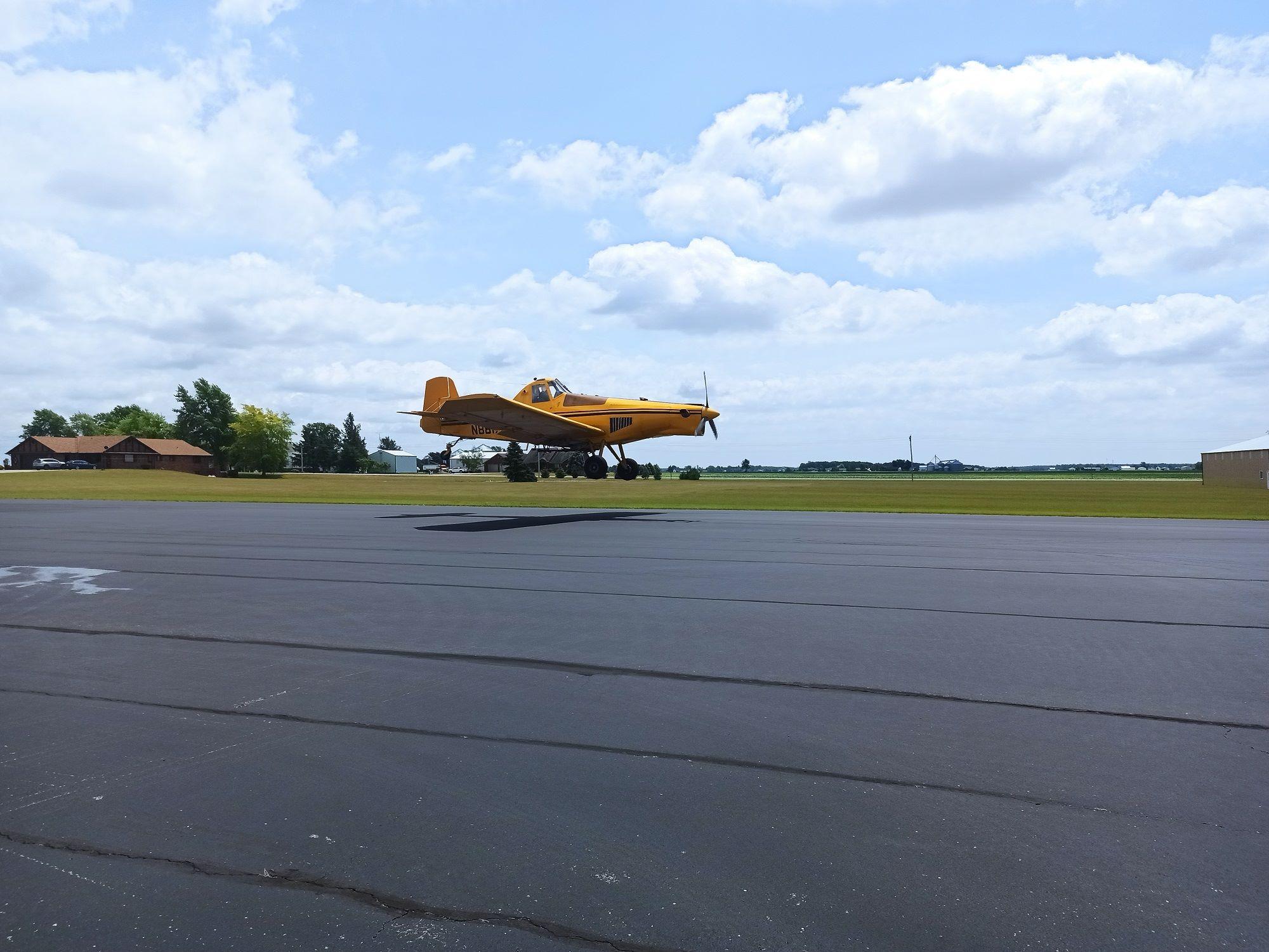
The modified Thrush hybrid-electric testbed aircraft made its first flight in June in Ohio.
U.S. startup Wright Aerospace and Spain’s Axter Aerospace have revealed they are flying a Thrush agricultural aircraft converted to hybrid-electric propulsion.
The aircraft first flew in June in Ohio.
The companies plan to use the aircraft as a testbed for electric propulsion components including motors, inverters and batteries.
The Thrush has been modified to an 800-kW parallel hybrid configuration with an off-the-shelf 300-kW electric motor installed along with the existing 500-kW Pratt & Whitney Canada PT6A turboprop and driving the single propeller via a custom coupling, Wright CEO Jeff Engler says.
Wright is developing a 2-megawatt electric propulsion unit for regional jets and turboprops and has launched a program to develop a 1,000 Wh/kg battery. “We said it would be nice to have a testbed. We have all these subsystem components that we want to be able to test at altitude,” he says.
“We do internal work with motors, generators and power electronics. And so having a testbed that has both a thermal engine and an electric propulsion system in a hybrid-electric format allows us to do testing at altitude of all those components,” Engler says.
“We’ve also seen some interest from potential operators, including skydiving operators, who would want to use a similar design and some crop-dusting operators,” he says. The electric motor is used to boost power for takeoff, allowing higher payloads on hot days and at high altitudes.
Wright’s electric propulsion unit has achieved 1.2 megawatts peak power and 1.1 megawatts continuous in ground testing. Simulated altitude testing is planned for 2024 in the NASA Electric Aircraft Testbed in Ohio. Wright is building a second motor aimed at reaching the 2-megawatt design goal.
“[The flying testbed] can’t do a 2-megawatt propulsion system. But the power electronics on our motor are designed in 250-300-kW subunits. So we can’t test all of our power electronics at once, but we can test the single unit, the cables and batteries and things like that all scaled down,” Engler says. “So it’s a middle ground instead of having to do megawatt-class testing on a much larger platform. It’s a more scalable way to do it.”
Embraer in August 2021 flew an EMB-203 Ipanema agricultural aircraft modified into a battery-electric propulsion testbed.
